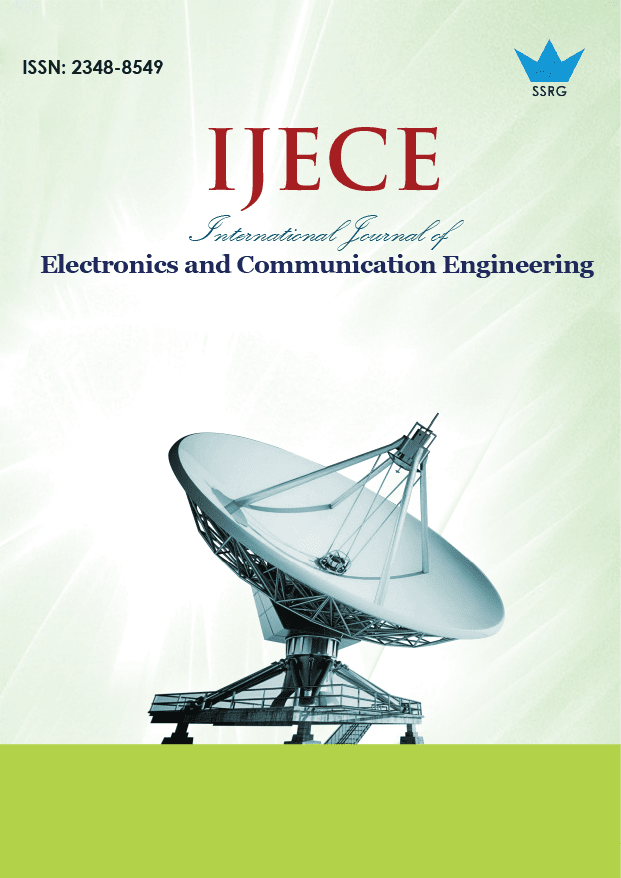Blockchain Based Cryptographic Protocols for Secure Data Transmission

| International Journal of Electronics and Communication Engineering |
| © 2024 by SSRG - IJECE Journal |
| Volume 11 Issue 12 |
| Year of Publication : 2024 |
| Authors : S. Senthil kumar, S. Rajaprakash, R. Jaichandran |
How to Cite?
S. Senthil kumar, S. Rajaprakash, R. Jaichandran, "Blockchain Based Cryptographic Protocols for Secure Data Transmission," SSRG International Journal of Electronics and Communication Engineering, vol. 11, no. 12, pp. 230-237, 2024. Crossref, https://doi.org/10.14445/23488549/IJECE-V11I12P121
Abstract:
The concept of blockchain is now gaining more and more attention than it did in the past. This technique provides an exceptionally high level of security to its potential users. Users are not very knowledgeable about the many ways in which the security of blockchain may be used to ensure the safety of the data that is sent. It has been hypothesised that the individual in question continued to use the "Salsa," a compact and secure device. The brand-new safety feature given the designation RPBB-24-6 is discussed in this academic work. An RPBB-24-6 encryption and decryption process is the way that has been offered, and this method comes with four different processes. Developing a covert message is the first step in the procedure. In the second step of the procedure, you will apply the secret code to each letter of the first secret message and then multiply the code by four times for each letter. Using the matrix as the third procedure, the encrypted data are applied. The application of the salsa approach constitutes the fourth step. Eventually, the plain text was transformed into data that was well secured.
Keywords:
Decryption, Encryption, Performance, RPBB-24-6, Salsa.
References:
[1] Muhammad Nasir Mumtaz Bhutta et al., “A Survey on Blockchain Technology: Evolution, Architecture and Security,” IEEE Access, vol. 9, pp. 61048-61073, 2021.
[CrossRef] [Google Scholar] [Publisher Link]
[2] Suhyeon Lee, and Seungjoo Kim, “Blockchain as a Cyber Defense: Opportunities, Applications, and Challenges,” IEEE Access, vol. 10, pp. 2602-2618, 2022.
[CrossRef] [Google Scholar] [Publisher Link]
[3] Mohammad Wazid, Ashok Kumar Das, and Youngho Park, “Generic Quantum Blockchain-Envisioned Security Framework for IoT Environment: Architecture, Security Benefits and Future Research,” IEEE Open Journal of the Computer Society, vol. 5, pp. 248-267, 2024.
[CrossRef] [Google Scholar] [Publisher Link]
[4] Mubashar Iqbal, and Raimundas Matulevicius, “Exploring Sybil and Double-Spending Risks in Blockchain Systems,” IEEE Access, vol. 9, pp. 76153-76177, 2021.
[CrossRef] [Google Scholar] [Publisher Link]
[5] S. Rajaprakash et al., “RBJ25 Cryptography Algorithm for Securing Big Data,” Journal of Physics: Conference Series, vol. 1706, pp. 1-8, 2020.
[CrossRef] [Google Scholar] [Publisher Link]
[6] Ivan Homoliak et al., “The Security Reference Architecture for Blockchains: Toward a Standardized Model for Studying Vulnerabilities, Threats, and Defenses,” IEEE Communications Surveys and Tutorials, vol. 23, no. 1, pp. 341-390, 2021.
[CrossRef] [Google Scholar] [Publisher Link]
[7] Yongfeng Huang et al., “Smart Contract Security: A Software Lifecycle Perspective,” IEEE Access, vol. 7, pp. 150184-150202, 2019.
[CrossRef] [Google Scholar] [Publisher Link]
[8] Bagath Basha Chan Batcha, et al., “A Novel Security Algorithm RPBB31 for Securing the Social Media Analyzed Data using Machine Learning Algorithms,” Wireless Personal Communications, vol. 131, pp. 581-608, 2023.
[CrossRef] [Google Scholar] [Publisher Link]
[9] Weiqi Dai et al., “PRBFPT: A Practical Redactable Blockchain Framework with a Public Trapdoor,” IEEE Transactions on Information Forensics and Security, vol. 19, pp. 2425-2437, 2024.
[CrossRef] [Google Scholar] [Publisher Link]
[10] Yong Wang et al., “Cloud-Assisted EHR Sharing with Security and Privacy Preservation Via Consortium Blockchain,” IEEE Access, vol. 7, pp. 136704-136719, 2019.
[CrossRef] [Google Scholar] [Publisher Link]
[11] Zeeshan Zulkifl et al., “FBASHI: Fuzzy and Blockchain-Based Adaptive Security for Healthcare IoTs,” IEEE Access, vol. 10, pp. 15644-15656, 2022.
[CrossRef] [Google Scholar] [Publisher Link]
[12] Nathalie Tan Yhe Huan, and Zuriati Ahmad Zukarnain, “A Survey on Addressing IoT Security Issues by Embedding Blockchain Technology Solutions: Review, Attacks, Current Trends, and Applications,” IEEE Access, vol. 12, pp. 69765-69782, 2024.
[CrossRef] [Google Scholar] [Publisher Link]
[13] C. Bagath Basha et al., “An Innovative Cryptography Safety Algorithm Called S-RSB-23 for Protecting Data Using Machine Learning Algorithm,” International Journal of Intelligent Systems and Applications in Engineering, vol. 12, no. 2S, pp. 503-510, 2024.
[Publisher Link]
[14] Oumaima Fadi et al., “A Survey on Blockchain and Artificial Intelligence Technologies for Enhancing Security and Privacy in Smart Environments,” IEEE Access, vol. 10, pp. 93168-93186, 2022.
[CrossRef] [Google Scholar] [Publisher Link]
[15] Shailendra Rathore, Jong Hyuk Park, and Hangbae Chang, “Deep Learning and Blockchain-Empowered Security Framework for Intelligent 5G-Enabled IoT,” IEEE Access, vol. 9, pp. 90075-90083, 2021.
[CrossRef] [Google Scholar] [Publisher Link]
[16] Kwame Opuni-Boachie Obour Agyekum et al., “A Proxy Re-Encryption Approach to Secure Data Sharing in the Internet of Things Based on Blockchain,” IEEE Systems Journal, vol. 16, no. 1, pp. 1685-1696, 2022.
[CrossRef] [Google Scholar] [Publisher Link]
[17] C. Bagath Basha et al., “The Design of Security Algorithm RPBB-24-1 in Multi-Way Path over the Distributed Ledger,” International Journal of Electrical and Electronics Engineering, vol. 11, no. 4, pp. 36-44, 2024.
[CrossRef] [Google Scholar] [Publisher Link]

 10.14445/23488549/IJECE-V11I12P121
10.14445/23488549/IJECE-V11I12P121